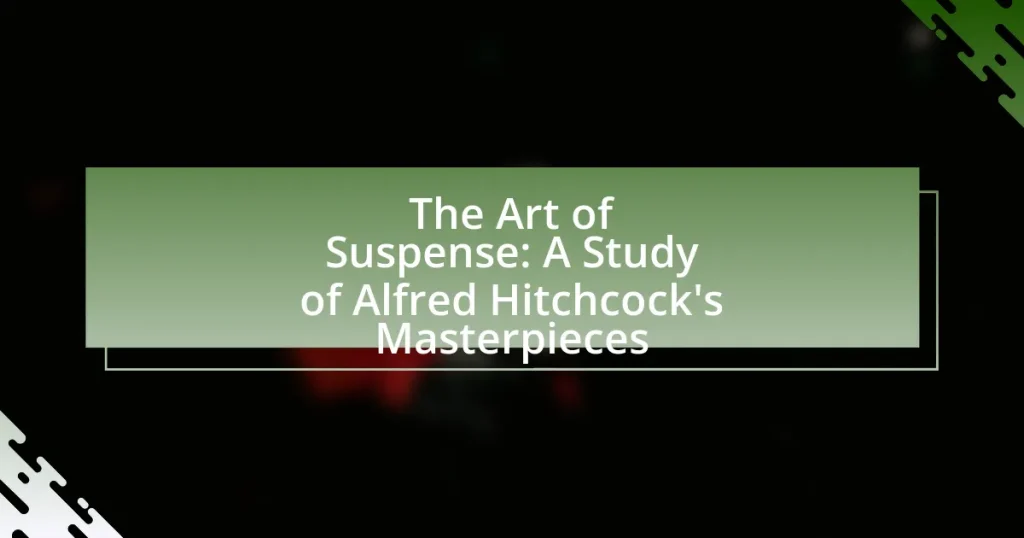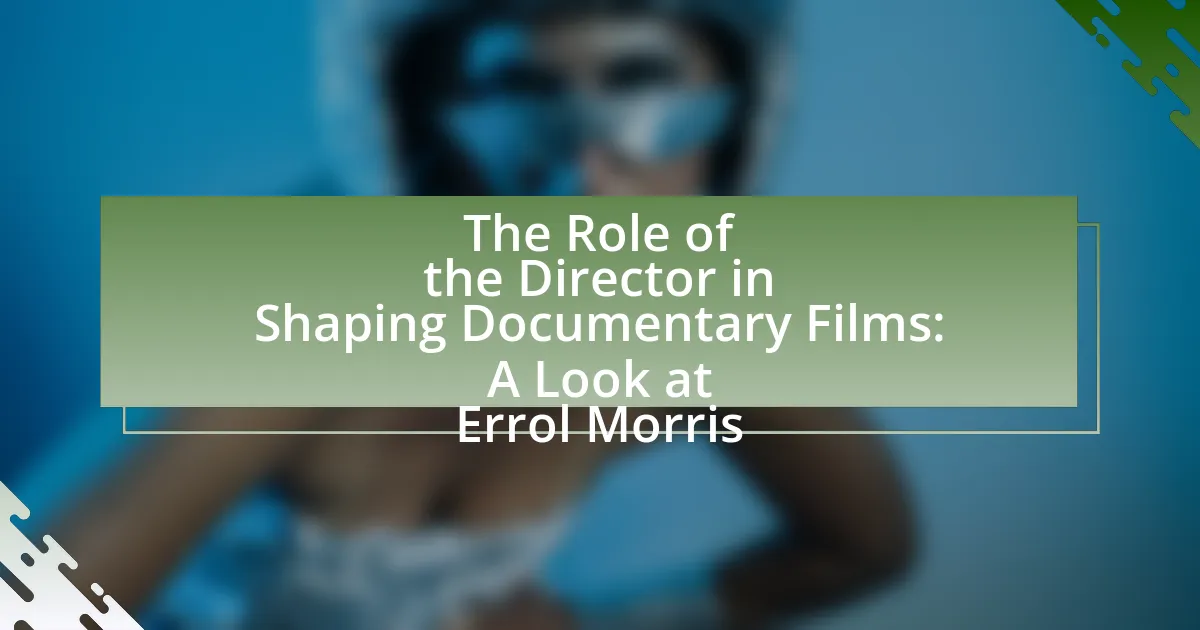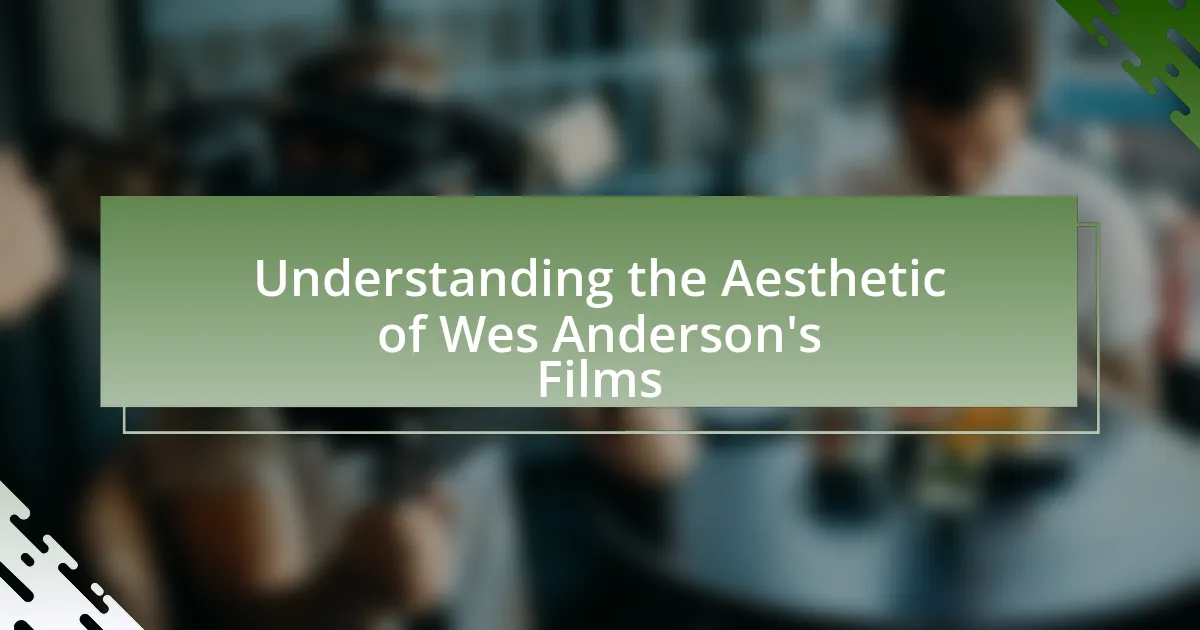The article examines the significance of suspense in Alfred Hitchcock’s films, highlighting his innovative techniques that engage and manipulate audience emotions. It explores Hitchcock’s definition of suspense, his use of dramatic irony, pacing, and visual composition, as well as the psychological aspects that enhance viewer investment in characters. Key films such as “Psycho,” “Rear Window,” and “Vertigo” are analyzed for their contributions to the suspense genre, showcasing themes of voyeurism, guilt, and the unknown. The article also discusses Hitchcock’s lasting influence on cinema and offers insights into how viewers can appreciate and analyze suspense in his works.
What is the significance of suspense in Alfred Hitchcock’s films?
The significance of suspense in Alfred Hitchcock’s films lies in its ability to engage and manipulate audience emotions, creating a heightened sense of tension and anticipation. Hitchcock masterfully employed techniques such as the “bomb theory,” where the audience is made aware of impending danger while the characters remain oblivious, thereby intensifying viewer anxiety. This approach not only keeps audiences on the edge of their seats but also deepens their emotional investment in the characters’ fates. For instance, in “Psycho,” the suspense surrounding Marion Crane’s fate in the shower scene exemplifies how Hitchcock uses music, camera angles, and pacing to amplify fear and surprise, making it one of cinema’s most iconic moments.
How does Hitchcock define suspense in his storytelling?
Hitchcock defines suspense in his storytelling as the tension created by withholding information from the audience while allowing them to know more than the characters. This technique engages viewers by making them anticipate potential outcomes, thereby heightening emotional investment. For example, in “Psycho,” the audience is aware of the impending danger to Marion Crane, which amplifies the tension as they watch her unknowingly approach her fate. This method of contrasting knowledge between the audience and characters is a hallmark of Hitchcock’s approach to suspense, effectively keeping viewers on the edge of their seats.
What techniques does Hitchcock use to create suspense?
Hitchcock employs several techniques to create suspense, including the use of dramatic irony, pacing, and visual composition. Dramatic irony occurs when the audience knows more than the characters, heightening tension; for example, in “Psycho,” viewers are aware of the impending danger while the protagonist is not. Pacing is crucial, as Hitchcock often builds suspense through slow reveals and escalating tension, evident in “Rear Window,” where the protagonist’s observations gradually uncover a potential crime. Additionally, visual composition, such as framing and camera angles, enhances suspense by focusing on critical details and creating a sense of unease, as seen in “Vertigo,” where the use of a dolly zoom creates disorientation. These techniques collectively contribute to Hitchcock’s mastery of suspense in film.
How does audience psychology play a role in Hitchcock’s suspense?
Audience psychology is crucial in Hitchcock’s suspense as it leverages viewers’ emotions and expectations to create tension. Hitchcock expertly manipulates audience knowledge through techniques like dramatic irony, where viewers are aware of threats that characters are not, heightening anxiety and anticipation. For instance, in “Psycho,” the audience knows about the impending danger in the shower scene, which amplifies the shock and fear when it occurs. This psychological engagement keeps viewers on edge, as they become emotionally invested in the characters’ fates, making the suspense more impactful.
Why is Hitchcock considered a master of suspense?
Hitchcock is considered a master of suspense due to his innovative techniques in building tension and creating psychological thrills. His use of suspenseful storytelling elements, such as the “MacGuffin” concept, where the audience is led to focus on an object or goal that drives the plot, exemplifies his mastery. Additionally, Hitchcock’s skillful manipulation of camera angles, lighting, and sound design enhances the viewer’s emotional engagement and anticipation. For instance, in “Psycho,” the infamous shower scene employs rapid editing and a haunting score to evoke fear and shock, solidifying his reputation. His films often explore themes of voyeurism and the unknown, further deepening the suspenseful experience.
What are the key elements that contribute to Hitchcock’s mastery?
Hitchcock’s mastery is primarily attributed to his innovative use of suspense, psychological depth, and visual storytelling techniques. His ability to create tension is exemplified in films like “Psycho,” where he expertly manipulates audience expectations through unexpected plot twists and the strategic use of music and sound. Additionally, Hitchcock’s focus on character psychology, as seen in “Vertigo,” allows viewers to connect deeply with the characters’ motivations and fears. His pioneering use of camera angles and framing, particularly in “Rear Window,” enhances the narrative by visually conveying themes of voyeurism and isolation. These elements collectively establish Hitchcock as a master of suspense in cinema.
How have Hitchcock’s films influenced the suspense genre?
Hitchcock’s films have profoundly influenced the suspense genre by establishing techniques that heighten tension and engage audiences. His use of innovative narrative structures, such as the “MacGuffin” to drive plots, and the strategic manipulation of audience perspective through camera angles and editing, set new standards for suspenseful storytelling. For instance, in “Psycho,” the shocking plot twists and the infamous shower scene exemplify his mastery of suspense, creating a lasting impact on filmmakers. Additionally, Hitchcock’s emphasis on psychological depth in characters has inspired countless directors to explore the complexities of human fear and desire, solidifying his legacy as a pivotal figure in the evolution of suspense cinema.
What are some of Alfred Hitchcock’s most notable masterpieces?
Alfred Hitchcock’s most notable masterpieces include “Psycho,” “Rear Window,” “North by Northwest,” “Vertigo,” and “The Birds.” “Psycho,” released in 1960, is renowned for its groundbreaking narrative and the iconic shower scene, which has become a cultural touchstone in horror cinema. “Rear Window,” from 1954, showcases Hitchcock’s mastery of suspense through the perspective of a wheelchair-bound photographer who believes he has witnessed a murder. “North by Northwest,” released in 1959, is celebrated for its thrilling chase sequences and mistaken identity plot. “Vertigo,” from 1958, is often regarded as one of the greatest films of all time, noted for its complex themes of obsession and identity. Lastly, “The Birds,” released in 1963, is famous for its innovative special effects and psychological horror elements. Each of these films has significantly influenced the thriller genre and solidified Hitchcock’s legacy as a master filmmaker.
Which films are considered essential in Hitchcock’s filmography?
Essential films in Alfred Hitchcock’s filmography include “Psycho,” “Vertigo,” “Rear Window,” “North by Northwest,” and “The Birds.” These films are pivotal due to their innovative storytelling, suspenseful direction, and significant impact on the thriller genre. “Psycho,” released in 1960, is renowned for its shocking plot twists and the iconic shower scene, which redefined horror cinema. “Vertigo,” from 1958, is celebrated for its complex narrative and visual style, often regarded as one of the greatest films of all time. “Rear Window,” released in 1954, showcases Hitchcock’s mastery of tension and voyeurism. “North by Northwest,” from 1959, is noted for its thrilling chase sequences and clever plot. Lastly, “The Birds,” released in 1963, is recognized for its groundbreaking special effects and psychological horror elements. Each of these films has left a lasting legacy in cinematic history, affirming Hitchcock’s status as a master filmmaker.
What themes are prevalent in Hitchcock’s most famous works?
Hitchcock’s most famous works prominently feature themes of suspense, voyeurism, and the psychological complexities of guilt and innocence. Suspense is created through meticulous pacing and unexpected plot twists, as seen in films like “Psycho” and “Rear Window.” Voyeurism is a recurring motif, exemplified by the protagonist’s perspective in “Rear Window,” where the act of watching becomes a source of tension. Additionally, the exploration of guilt and innocence is evident in “Vertigo,” where characters grapple with their past actions and emotional turmoil. These themes are integral to Hitchcock’s storytelling, reinforcing his reputation as a master of psychological thrillers.
How do these films exemplify Hitchcock’s suspense techniques?
Hitchcock’s films exemplify suspense techniques through the use of dramatic irony, meticulous pacing, and visual storytelling. For instance, in “Psycho,” the audience is aware of Norman Bates’ true nature long before the characters are, creating tension as viewers anticipate the inevitable confrontation. Additionally, Hitchcock employs the “MacGuffin” concept, where an object or goal drives the plot but is less important than the suspense surrounding it, as seen in “North by Northwest.” His strategic use of camera angles and framing, such as the iconic shower scene in “Psycho,” heightens emotional impact and keeps viewers on edge. These techniques collectively establish a gripping atmosphere that defines Hitchcock’s mastery of suspense.
What awards and recognitions have Hitchcock’s films received?
Alfred Hitchcock’s films have received numerous awards and recognitions, including six Academy Awards, with one awarded for Lifetime Achievement. His film “Rebecca” won the Academy Award for Best Picture in 1940. Additionally, Hitchcock was nominated for Best Director five times, and his works have been honored with various accolades from organizations such as the British Academy of Film and Television Arts (BAFTA) and the Directors Guild of America (DGA). His influence on cinema has also been recognized with a star on the Hollywood Walk of Fame and induction into the American Film Institute’s AFI’s 100 Years…100 Movies list.
How do these accolades reflect the impact of his work on cinema?
Alfred Hitchcock’s accolades, including multiple Academy Awards and Golden Globe nominations, reflect his profound impact on cinema by establishing him as a pioneer of suspense and psychological thriller genres. His innovative techniques, such as the use of camera angles and editing to create tension, have influenced countless filmmakers and shaped narrative storytelling in film. For instance, Hitchcock’s film “Psycho” revolutionized horror cinema and is often cited as a benchmark for suspenseful storytelling, evidenced by its lasting legacy in both critical acclaim and audience engagement. These honors not only recognize his artistic achievements but also underscore his role in evolving cinematic language and audience expectations, solidifying his status as a key figure in film history.
How can viewers appreciate the art of suspense in Hitchcock’s films?
Viewers can appreciate the art of suspense in Hitchcock’s films by analyzing his innovative techniques, such as the use of dramatic irony, pacing, and visual storytelling. Hitchcock often employs dramatic irony, where the audience knows more than the characters, creating tension and anticipation; for example, in “Psycho,” viewers are aware of the impending danger while the characters remain oblivious. Additionally, Hitchcock’s meticulous pacing builds suspense, as seen in “Rear Window,” where prolonged shots heighten the viewer’s anxiety. His mastery of visual storytelling, including strategic camera angles and framing, enhances emotional engagement, making the suspense more palpable. These elements collectively contribute to a rich viewing experience that emphasizes the psychological aspects of fear and anticipation.
What should viewers look for when watching Hitchcock’s films?
Viewers should look for the intricate use of suspense and psychological tension in Hitchcock’s films. Hitchcock masterfully employs techniques such as the “MacGuffin,” which drives the plot while keeping the audience engaged in the characters’ motivations. Additionally, viewers should pay attention to the innovative camera angles and framing that create a sense of unease, as seen in films like “Psycho” and “Rear Window.” The director’s use of sound, particularly silence and music, also heightens emotional responses and builds tension. These elements collectively contribute to the unique viewing experience that defines Hitchcock’s cinematic style.
How can understanding Hitchcock’s techniques enhance the viewing experience?
Understanding Hitchcock’s techniques can significantly enhance the viewing experience by allowing audiences to appreciate the intricacies of suspense and psychological tension he masterfully employs. Hitchcock’s use of techniques such as the “MacGuffin,” which refers to an object that drives the plot but is ultimately unimportant, keeps viewers engaged and focused on character motivations rather than the object itself. Additionally, his innovative use of camera angles and editing, such as the famous “dolly zoom,” creates a sense of unease and heightens emotional responses. For instance, in “Vertigo,” this technique visually represents the protagonist’s psychological state, deepening the viewer’s connection to the narrative. By recognizing these techniques, viewers can better understand the layers of meaning in Hitchcock’s films, leading to a more immersive and rewarding cinematic experience.
What common mistakes do viewers make when interpreting suspense in his films?
Viewers commonly mistake the manipulation of suspense in Alfred Hitchcock’s films by focusing too heavily on plot twists rather than the emotional buildup. This misinterpretation leads to an undervaluation of the psychological tension that Hitchcock expertly crafts through character development and atmosphere. For instance, in “Psycho,” the suspense is not solely derived from the shocking moments but from the gradual sense of dread and the audience’s connection to the characters, which enhances the overall impact of the narrative.
What are some practical tips for analyzing suspense in cinema?
To analyze suspense in cinema effectively, focus on the use of pacing, music, and character development. Pacing involves the timing of scenes and cuts, which can heighten tension; for instance, Hitchcock often employed slow builds followed by sudden climaxes to create suspense. Music plays a crucial role in setting the emotional tone and can signal impending danger, as seen in the iconic score of “Psycho.” Character development is essential, as audiences must care about the characters’ fates; Hitchcock’s meticulous crafting of characters ensures viewers are invested in their outcomes. These elements combined create a layered experience that enhances suspense, making it a critical aspect of cinematic analysis.




